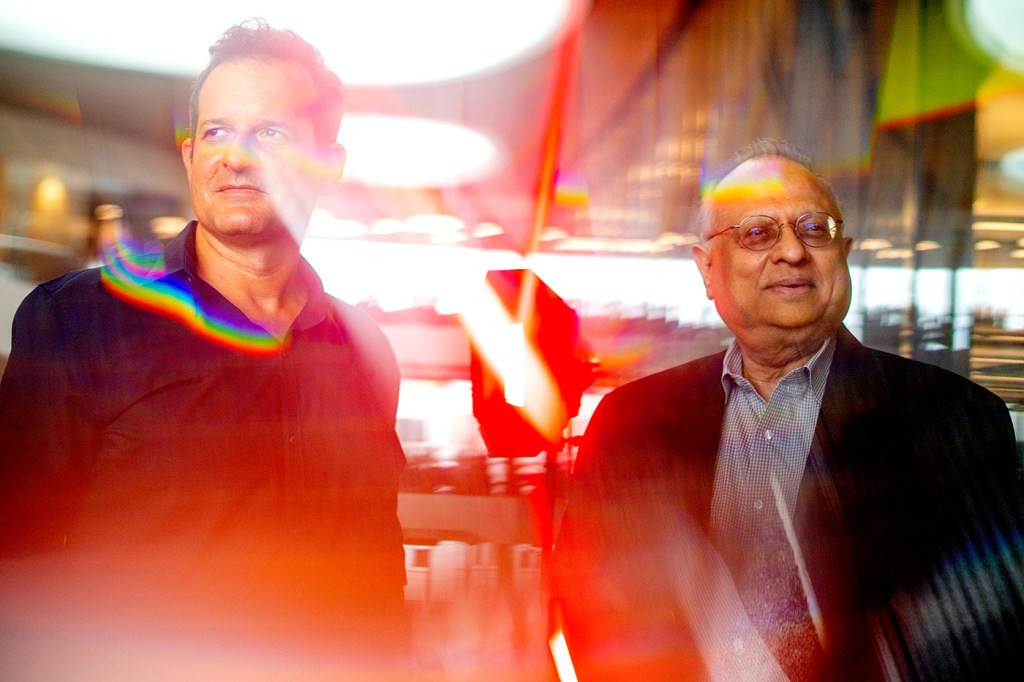Using a billion-dollar laser, physicists hope to probe the quantum world for new discoveries

Say you’re an aspiring physicist, probing the quantum world to gain insight into the fundamental nature of reality.
There are two ways to go about your scientific odyssey, but both involve very expensive machinery. One way is to smash a bunch of atoms together, revealing their subatomic guts; another is to toss them under a ray of light, illuminating a nanoscopic trajectory across space.
A group of theoretical physicists at Northeastern are setting out to do the latter, with millions in new funding. They are part of a multi-institutional team that received a $2.7 million grant from the Department of Energy for a project aimed at developing a set of machine-learning tools and associated software that will help researchers better interpret quantum images produced by one of the world’s largest and most powerful particle accelerators, the billion-dollar Stanford Linear Accelerator.
The funding for the project will be split more or less equally between Northeastern University, Howard University—the lead institution involved—and the Stanford Linear Accelerator Center (SLAC).
Particle accelerators are large, complicated machines, but do exactly what the name suggests: They accelerate charged particles, such as the protons and electrons that comprise atoms, to incredibly high speeds, often crashing them against other particles in magnificent acts of quantum destruction.
But the Stanford particle accelerator, also called the Linac Coherent Light Source (LCLS), along with its upgrade, the LCLS-II, isn’t designed to pulverize atoms. Researchers involved in the project plan to use the LCLS to shoot high-energy X-rays at a range of different materials to observe how the light scatters when interacting with matter that has been merely “disturbed,” not smashed to bits, says Arun Bansil, university distinguished professor in the Department of Physics at Northeastern.
The LCLS machines can take “X-ray snapshots of atoms and molecules at work” at “ultrafast timescales,” according to SLAC’s website. The Stanford laser can deliver 120 X-ray pulses per second, with each lasting just “quadrillionths of a second,” or femtoseconds. At such an incomprehensibly fast timescale, researchers will also be developing a set of technological tools to model and interpret the data.
“Those are snapshots of material in its excited state,” Bansil says. “It’s kind of like what happens when you throw a stone in water.”
It’s the resulting splash, to complete the quantum metaphor, that researchers are looking to capture at precise moments in time, and in sequence, Bansil says.
Here’s another way to look at it: If you’ve ever been inside a sporting arena when the “Mexican wave” is going around, you might not be paying attention to the people—their facial expressions, what they’re wearing, and other such characteristics—who make up the wave, only that they are part of a larger process.
Here, the fans would represent groups of electrons in their “excited state.”
“It’s much easier to describe the Mexican wave to someone than the behavior of 19,000 individual people,” says Adrian Feiguin, associate professor in the College of Science, who is also part of the research team.
But what’s so complicated about this delicate molecular film is that it is not observed in so-called real space, or through direct means, Bansil says.
The “image” produced by the laser is rather a set of data points from which researchers use to infer the behavior of electrons and other small particles in the materials. The software platforms will give them the opportunity to interpret data from the LCLS in real-time, Bansil says.
“So, in this sense, the machines, which are really computers, are used to look at large amounts of data to gain physical insights into the data and help develop new theoretical models,” Bansil says.
The focus of the overall project is to better understand the properties and states of certain magnetic materials, Bansil says.
“The materials we will be focusing on are indeed magnetic materials,” Bansil says. “Magnetism is getting more and more attention because of the business it offers.”
For media inquiries, please contact media@northeastern.edu.






